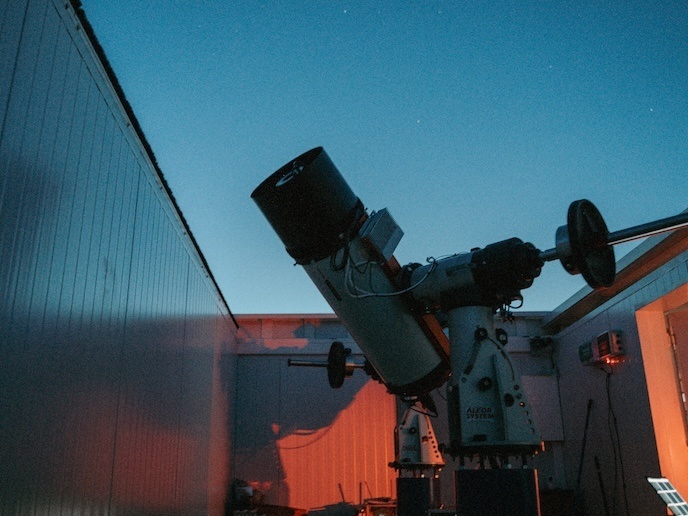Making low Earth orbit safer
Low Earth orbit is becoming even more congested, and the trend is set to continue. Projections indicate that there will be 40 000 satellites by 2030. To put that in perspective, today there are 9 000. Given the debris our activities have generated, low orbit space is getting harder and harder to navigate. Space debris comes from many activities such as satellite launches, on-orbit explosions, and missions. For instance, Russia tested a direct-ascent anti-satellite missile in November 2021 that struck a Russian satellite, COSMOS 1408, and created over 1 800 debris fragments. “The most concerning part is the creation of an endless cycle of debris: one collision enhancing the risk of a following one. This dangerous chain reaction is known as the Kessler Syndrome. It is similar to a snowball effect that keeps worsening, threatening satellites and future space missions,” explains Anthony Caron, CASSIOPEE project manager. The debris can travel up to 15 km a second, so even small particles can impart a significant amount of kinetic energy, causing fractures and structural damage. The CASSIOPEE project, hosted by Aldoria, France, has developed novel ways to make space safer and more sustainable through the creation of a new monitoring and alert system.
Synchronised telescoping scanning across four continents
CASSIOPEE developed six, telescope-based optical stations in four continents that are entirely passive and stealthy and have minimal environmental impact. The technology includes two multi-telescope stations, each equipped with four wide-field telescopes which are synchronised to scan the sky and identify objects. The observations are then processed in real time. The analysis returns astrometric and photometric data which is then analysed and merged with other data sources. Powerful algorithms ensure reliable and precise trajectories. This then ensures that companies that sign up for the service can get information on the position, speed, trajectory prediction and axis of rotation of the object being tracked. “We can give them the information they need to optimise the exploitation of their payloads, and by helping them to plan the optimal trajectory, operators can increase the life of their satellite,” Caron notes. The project also developed four, single-telescope stations primarily used for testing and conducting advanced research on objects with known trajectories, that require updated data. The European Union has been supporting research to design and construct ever more powerful telescopes.
European solutions for low orbit space challenges
The fact that the service is offered by a company based within the EU is significant, Caron believes. “In the current geopolitical climate, Europe must have its own capabilities to monitor space activity and protect its interests. By offering a European-centric solution, Aldoria’s solutions ensure that European space operators have the tools they need to protect their assets independently, supporting Europe’s leadership.” Funding from the Horizon Europe programme, through the CASSIOPEE project, helped Aldoria to develop a multi-telescope observation station in Spain. “We solved electronic issues, developed the whole IT infrastructure to collect data, and programmes to control the four telescopes at the same time,” adds Caron. The project also developed modules to correct, identify and associate space objects with observed data, orbit determination and scenario proposition. Caron is proud of the project’s range of achievements: “Along with the development of our array of telescopes and all the software solutions we came up with, we also perfected our application programming interface (API). “There’s no point in all this sophisticated data collection if it is not easily accessible to our clients.”
Keywords
CASSIOPEE, Horizon Europe, low orbit space, collision, synchronised telescoping scanning, astrometric, photometric data







